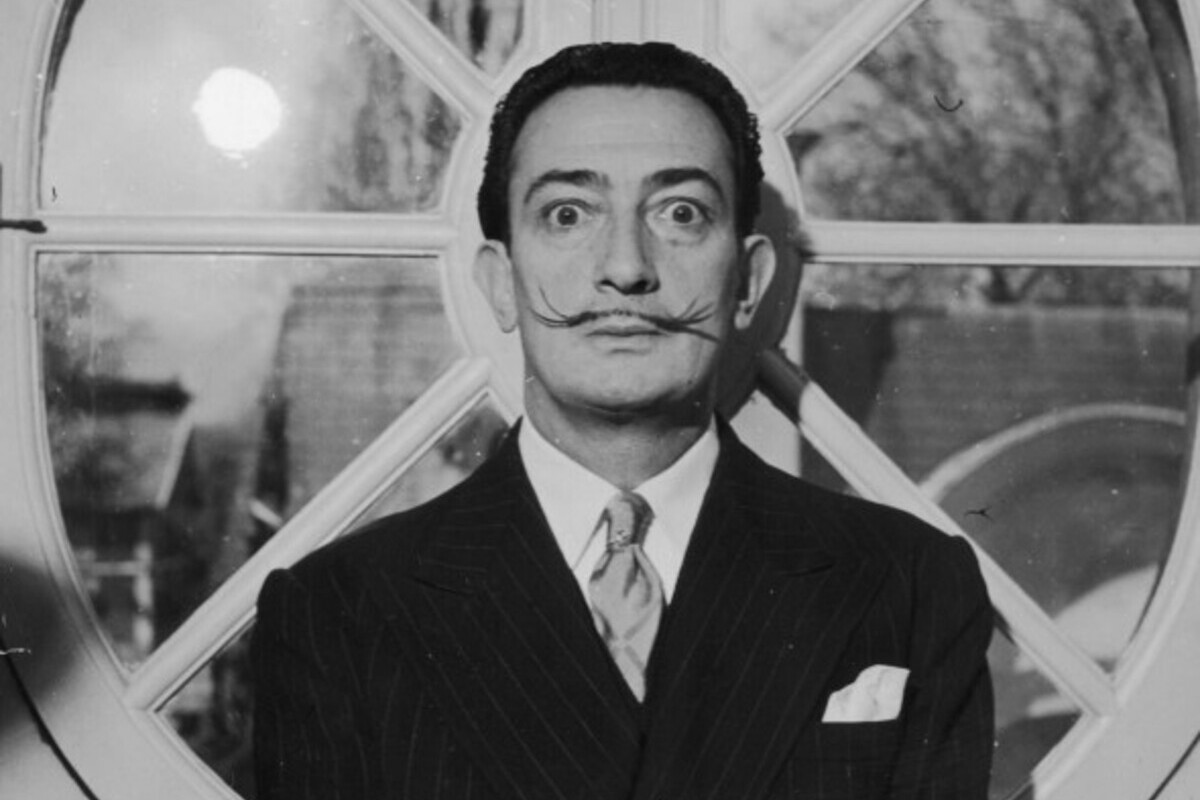Salvador Dalí is one of the most recognizable artists of the 20th century, a genius of surrealism, an eccentric personality, and a man who turned his life into a work of art. His image, trademark mustache, provocative behavior, and theatrical statements made him a global cultural icon. Dalí was not only a painter but also engaged in filmmaking, stage design, advertising, and jewelry design. His creations amazed, shocked, and inspired audiences around the world. Below are fascinating and educational facts about Salvador Dalí that you may not have known.
- Salvador Dalí was named after his older brother who died nine months before his birth. His parents believed that the newborn was the reincarnation of their deceased son. Dalí carried the sense of dual identity throughout his life. This theme often appeared in his artworks.
- One of Dalí’s most famous paintings is “The Persistence of Memory,” known for its melting clocks. The piece became a symbol of surrealism and is interpreted as a reflection on the fluidity of time. According to Dalí, the idea came to him after watching camembert cheese melt in the sun. This shows how he could transform ordinary moments into philosophical imagery.
- Dalí used a unique method for finding inspiration by entering a semi-sleep state, which he called the hypnagogic state. He would sit holding a metal spoon over a plate and let himself drift off. When the spoon dropped and made a noise, he would wake up and immediately capture the images he had seen. He considered this technique a gateway to the subconscious mind.
- The artist collaborated with Alfred Hitchcock, designing dreamlike sets for the 1945 film “Spellbound.” His surrealist visual style added a distinctive atmosphere to the film. Dalí also worked with Walt Disney on the project “Destino,” which was completed only in 2003. His influence on the visual language of cinema was significant.
- Dalí had a deep fascination with science, especially the theory of relativity, quantum physics, and DNA. His later works often feature molecular structures, spirals, and geometric forms. He believed that science was a modern form of mysticism and sought to integrate it with art. This was evident in his so-called “mystical period.”
- Dalí’s mustache was an essential part of his public image and was carefully styled. He took inspiration from the Spanish painter Diego Velázquez of the 17th century. Dalí even published a book dedicated to his mustache, featuring photographs from various angles. He described his mustache as antennas tuned to the cosmos.
- Dalí’s wife and muse, Gala, had a profound impact on his life and art. She was originally from Russia and was previously married to the poet Paul Éluard. Dalí adored her, gave her most of his earnings, and allowed her freedom in her personal relationships. Many of his major works were dedicated to or inspired by her.
- Dalí suffered from various phobias, including an intense fear of grasshoppers. As a child, he witnessed the insects devouring living creatures, which traumatized him. He often depicted grasshoppers in his paintings as symbols of destruction and fear. He was not afraid to confront the viewer with discomfort.
- In 1934, Dalí was expelled from the surrealist movement for being too individualistic and for refusing to condemn fascism. Nevertheless, he continued to call himself the only true surrealist. His famous declaration was “Surrealism is me.” He created a world of his own, free from conventional rules.
- Dalí loved luxury and eccentricity. He carried a golden cane and was known to appear in public with armadillos, ants, or even a baby tiger. His interviews resembled theatrical performances filled with absurdity and provocation. He deliberately blurred the line between himself and his artistic persona.
- Dalí founded his own museum in his hometown of Figueres. It is not just a gallery but a surrealist labyrinth with giant eggs on the roof, mirrors, and monumental installations. He personally designed every part of the building and is buried in the museum’s basement. Today, the Dalí Theatre-Museum is one of the most visited art institutions in Europe.
- Dalí also designed extraordinary jewelry in collaboration with luxury brands. His creations included a beating heart and a face that transformed into a vase. These pieces were not only decorative but also philosophical. He believed that art should permeate every aspect of life.
- Despite his love for theatrics, Dalí was serious about painting technique. He deeply studied the Old Masters, especially Rembrandt and Vermeer. His paintings are technically precise and meticulously detailed. He managed to combine flawless technique with limitless imagination.
- After Gala’s death, Dalí fell into deep depression and withdrew from public life. He stopped creating and spent his final years in seclusion. Some researchers believe he intentionally stopped eating to hasten his death. He passed away in 1989, leaving behind an unmatched artistic legacy.
Salvador Dalí was not just an artist but a phenomenon who united genius, absurdity, depth, and provocation in one person. His life was a continuous artistic experiment that transformed how we view art and creativity. These amazing facts offer a glimpse into the surreal world he created, where reality meets fantasy. The more we learn about him, the more we are drawn to explore his mysterious universe again and again.





